The Eugenics War And World War III In The Star Trek Universe, Explained
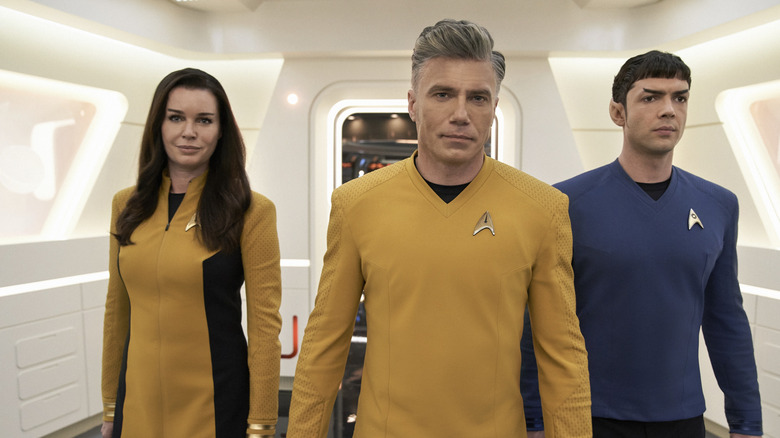
"Star Trek: Strange New Worlds" reaches deep into "Trek" canon. You don't need to know about the Eugenics Wars and World War III to enjoy the mostly standalone show, but ... has a little extra knowledge never hurt? Especially when the first episode of the new Paramount+ series references these past events so heavily.
When "Star Trek" was first conceived in the mid-1960s, the '90s still seemed like a far way off. It was far away enough that the writers of "Trek" felt completely comfortable extrapolating a future history that would begin as early as 1992. "Star Trek" did not predict Boyz II Men's " The End of the Road " being the biggest album that year, but they did predict the eventual rise of Khan Noonien Singh, a genetically enhanced ruler who would, thanks to his ambition, enhanced intellect, and increased strength, take over the world.
Although none of the extant "Star Trek" canon has depicted it directly, there are two major world conflicts in the "Star Trek" timeline that were necessary to bring about Gene Roddenberry's peaceful vision of the future: The Eugenics Wars and World War III. Roddenberry, after all, created "Trek" in the mid-1960s, a time when he could look out his window and see a great amount of turbulence that likely didn't leave him feeling hopeful. Racial segregation was on the books, greed was corrupting the world, and the Vietnam War was raging. It was not an optimistic time. Roddenberry seems to have sensed — or at least feared — that a collapse was imminent. That is, if the future built into the history of the "Star Trek" universe is any indicator of Roddenberry's attitudes.
As such, the world — to Roddenberry's eyes — would need the Etch-A-Sketch treatment before a better future could begin. Shake up the whole planet, erase the picture, and begin drawing again. Humanity, by Roddenberry's assumed estimation, needed to nearly collapse under its own destructive hubris before it realized that looking up to the stars was preferable to killing one another en masse.
While the timeline has shifted around a lot as the decades have passed (the latest season of " Star Trek: Picard " takes place in 2024, and the Eugenics Wars are not in full swing), they still seem to hang heavily over the near-future of "Star Trek." Indeed, genetic engineering is a large part of the second season of "Picard," one of the main villains being Dr. Adam Soong (Brent Spiner) a geneticist who wants to enhance humanity for the better ... and for the worse.

The Eugenics Wars
The first time audiences heard of The Eugenics Wars was the during the "Star Trek: The Original Series" episode " Space Seed ," which first aired on February 16, 1967. In it, the Enterprise discovers a seemingly deactivated "sleeper ship," the S.S. Botany Bay, wherein a small group of human beings have been in cryogenic sleep for 200 years. Of the 84 people frozen, 72 are still alive. The Enterprise rescues and resurrects their leader, finding him to be none other than Khan Noonien Singh (Ricardo Montalbán), the onetime dictator of Earth. "Space Seed" offers a good deal of exposition regarding Trek history: In the 1990s, humans were subjected to breeding experiments, resulting in arrogant and powerful superbeings who took over much of the world.
Although "Star Trek" is ultimately a show centered on pacifism, there is a lot of dialogue in "Space Seed" to describe how awesome Khan is as a warlord. Several characters describe him as a benevolent dictator — reminiscent of Plato's philosopher kings — who didn't engage in genocide and who didn't start a war until he was attacked. The episode's writers, Gene L. Coon and Carey Wilbur, seem torn between writing a show that touts a philosophy of pacifism, and their own Nietzsche-like admiration of a powerfully willed man.
The actual catalytic event that kicked off the Eugenics wars has never been made explicit in "Star Trek," although from "Space Seed" we know that augmented human beings were taking over the world as despots. Khan wasn't as despotic as others of his generation, but he was still a dictator. Indeed, Khan eventually tries to take over the Enterprise. Kirk convinces him that a greater challenge would be to begin society fresh on an uninhabited planet. Khan accepts the challenge, and he — along with all the other augmented people — are dropped off on a planet called Ceti Alpha V. Anyone who has seen " Star Trek II: The Wrath of Khan " knows that a major environmental disaster left Khan stuck on a planet that had become a desert. He was stranded there for 20 years. Hence his titular wrath.
Borderland, Cold Station 12, and The Augments
Additional ex post facto details about the Eugenics Wars were filled in during the fourth season of " Star Trek: Enterprise ." In a three-part episode ("Borderland," "Cold Station 12," and "The Augments"), audiences were introduced to Dr. Arik Soong (Spiner again), who was on the run for developing a race of generically enhanced people, a few of which were running amok among the Klingon Empire. Recall that "Enterprise" takes place nearly a century before the events of the original "Star Trek," so this was long before Khan was resurrected.
The Augments in this three-parter talk about how Khan was considered their grandfather. There is also a lot of dialogue devoted to the long-held ban of genetic enhancements in the world of "Star Trek." The ban is mentioned multiple times throughout " Star Trek: The Next Generation ," and it will be considered something of a scandal when one of the main cast members of " Star Trek: Deep Space Nine " was secretly an augment since the start. The idea of shaping human history via genetic manipulation has largely been taboo in Trek, seeing as it draws from similar evil ideas of genetic purity often parroted by white supremacists throughout history. Two different Soongs will be responsible for carrying this idea forward: Arik and Adam from "Enterprise" and "Picard."
The three-part episode ends with a cute twist: Arik, having been apprehended, is convinced that genetics is not the path to making perfect people. But maybe cybernetics is. He says to himself that he could likely create a realistic humanoid android, provided he pass the project down a few generations. Boom. This is how we got Data on "Next Generation."
World War III
The details of World War III are often left vague by canonical dialogue. Here's what Trekkies do know:
That World War III was fought from 2026 to 2053. That the war was kicked off by arguments about genetic manipulation left over from the Eugenics Wars, very much the way much of the damage left by World War I led frighteningly directly into World War II. We know from the original series episode "The Savage Curtain" — an episode that sees the resurrection of one Colonel Phillip Green (Phillip Pine), one of WWIII's nastiest dictators — that World War III will involve nuclear attacks, and the utter waste of the Earth's surface. The nuclear apocalypse was also alluded to in "The Next Generation," as well as an episode of "Star Trek: Discovery," wherein a character describes how bombs were being dropped as late as 2053, leading to the devastation that cause all sides to lose. According to dialogue in the "Star Trek: The Next Generation" pilot, "Encounter at Farpoint," World Ward III's ancillary conflicts would continue to rage until the 2070s.
Viewers also know from "Encounter at Farpoint" that soldiers were controlled by addictive drugs — we see Q (John De Lancie) wearing the uniform of a World War III soldier — and that deliberate acts of eco-terrorism were par for the course. Humanity was bombing one another to no end and deliberately destroying the planet, all while high on drugs. Additionally, humanity would be overrun by brutal, miniature dictatorships, overseen by medieval-style kangaroo courts wherein people would be judged and executed with very little evidence; Q would also put on the garb of the judge seen in these courts. What a pleasant time.
This was the Etch-A-Sketch moment, Roddenberry seemed to feel, that humanity required. In the 1996 film "Star Trek: First Contact," the crew of the Enterprise-E were sucked back to the year 2063, after the bulk of Earth's carnage had ended, and our species was struggling to survive. It was during this time that Zefram Cochran (James Cromwell) would invent the world's first faster-than-light engine. While testing the engine, it would attract the attention of a passing Vulcan vessel, giving them license to come visit. Making First Contact with the Vulcans was a wake-up call for all humanity, and people began to unify, realizing that we weren't doing so well on our own, but might improve if we see ourselves as neighbors in a broad, cosmic community.
Humanity may be in a dark tunnel now, but there will always be a light at the end.
Den of Geek
Star Trek and the Shadow of World War III
Star Trek's fictional WWIII casts a long shadow over its timeline, and now Discovery and Picard are exploring how hard-won the show's utopia was.

- Share on Facebook (opens in a new tab)
- Share on Twitter (opens in a new tab)
- Share on Linkedin (opens in a new tab)
- Share on email (opens in a new tab)
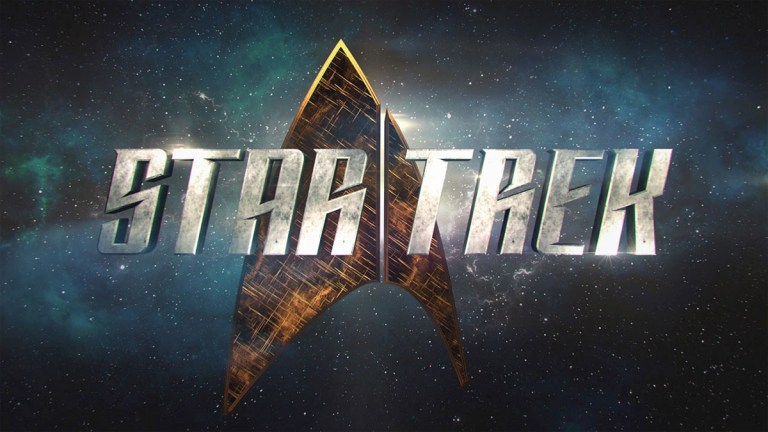
It is set in a distant, utopian future, but ever since the original series Star Trek has sought to hold a mirror to contemporary political and moral dilemmas.
In documentary series The Center Seat: Celebrating 55 Years of Star Trek , now available in the UK on IMDb TV, director Brian Volk-Weiss looks at how the show commented on issues such as the Cold War, Vietnam, Civil Rights, and the issue of euthanasia, among others. But as Volk-Weiss points out, there is one issue that has loomed over the Star Trek universe since its inception.
“We talk about this in Center Seat a little bit, all Trekkies know the foundation of Star Trek, in canon, the Federation and Starfleet, everybody’s known since the original series the foundation of those organisations is World War III,” Volk-Weiss says.
Your Last So-Called ‘World War’
It’s true that World War III has cast a shadow over Star Trek from the start. In ‘Space Seed’, the episode that introduced Khan Noonien Singh, Spock describes the Eugenics Wars as “the era of your last so-called ‘World War’”. Later, the episode ‘ Bread and Circuses ’ sees Spock mention that 37 million people died in Earth’s World War III.
Ad – content continues below
Even when not referenced directly, we see it reflected in episodes like ‘The Omega Glory’, set in a nuclear wasteland that is mysteriously similar to a post-nuclear Earth, right down to the text of the US Constitution.
Star Trek is, whichever way you cut it, the story of a post-apocalyptic Earth. It made sense as a piece of backstory when the show began. Nuclear war was a constant, real and immediate threat, the Cuban Missile Crisis a recent memory. In the sixties a World War III must have seemed like an inevitability – if you give something a sequel people are automatically going to expect a trilogy. That it might not strike until the 1990s or the 21 st century must have seemed as optimistic as anything else in the series.
Even when the Star Trek: The Next Generation pilot aired, only two years before the Berlin Wall came down, nuclear Armageddon was considered such an inevitable part of our future history that it made up a significant portion of the plot of ‘Encounter at Farpoint’. We see Q dressed up as a World War III soldier, and the crew of the Enterprise put on trial in a post-apocalyptic, lawyer-free trial in the age of “nuclear horror”.
From Future History to Canon Lore
Then the Berlin Wall came down. The international stage shifted. A lot of sci-fi future histories started to seem pretty silly in an age where Gorbachev was doing adverts for Pizza Hut .
“People kind of glossed over and don’t think about it too much,” Volk-Weiss tells us. “Even in First Contact , in a weird way it’s glossed over a little bit.”
Star Trek: First Contact is set in 2063, in the aftermath of World War III, and while everyone’s dress is fairly scrappy looking, the lush pine forests that surround Zefram Cochrane’s laboratory are hardly the result of a nuclear winter.
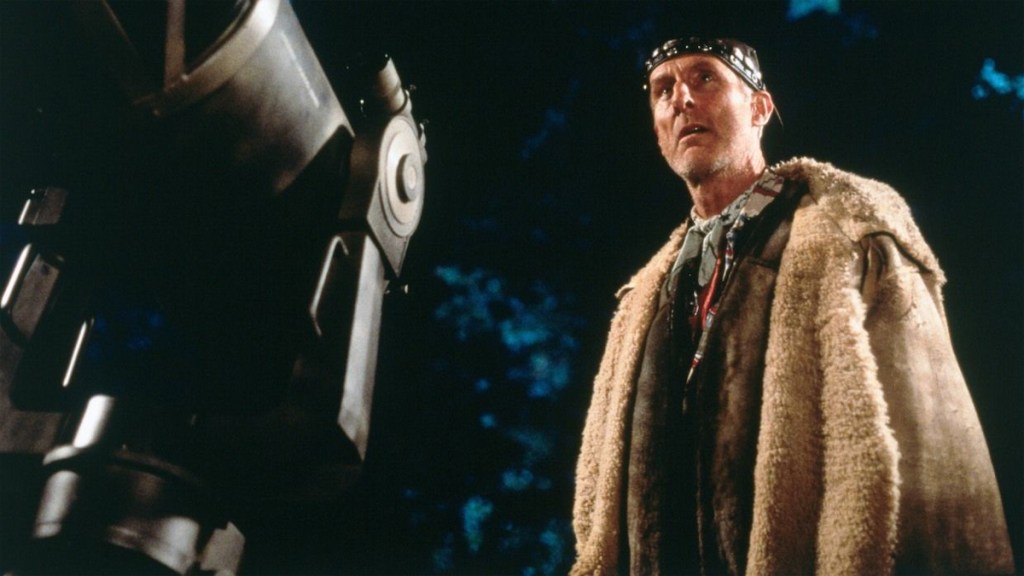
Star Trek: Enterprise references the war a few times, particularly in its closing episodes, but it already feels like Canon Lore rather than a future event that we’re supposed to believe will happen.
Get the best of Den of Geek delivered right to your inbox!
While various source across Star Trek canon agree that World War III starts sometime in the mid-2020s (I know, we’ll get to that) and carries on until the 2050s, we see plenty of stories and references that talk about space colonies, interplanetary and even interstellar missions taking place during that time. Most of this is the simple result of TV writers not paying as much attention to continuity as Memory Alpha editors, but it also reflects the fact that World War III simply wasn’t at the forefront of everyone’s minds the way it has been.
In Star Trek: Deep Space Nine , when O’Brien sees a mid-21 st century altered by time travel, he remarks “And that wasn’t the mid-21 st century I read about in school. It’s been changed. I mean, Earth history has been through its rough patches, but never that rough.” Which must have been pretty grim given it was a period of nuclear war.
A Deadline Approaches
That story was ‘Past Tense’, an episode set in a dystopian 2024 where the homeless were rounded up into camps and forgotten about. If that seems prescient, it’s only because it seemed equally relevant at the time.
“We weren’t being predictive. We were just looking out our windows in the 90s,” Deep Space Nine producer Robert Hewitt Wolfe has said .
2024 gets one other mention in the Star Trek canon, in the Star Trek: The Next Generation episode, ‘ The High Ground ’, when Data refers to “the Irish reunification of 2024”.
Like World War III, this is a prediction that seemed dated following the Good Friday Agreement, but the chaos around Brexit has suddenly made it a lot more plausible. Brexit is only one of a number of frightening and dramatic events that have occurred over the last decade, and once again, Star Trek is responding to them.

“Every ten years there’s a new Bond, a new Batman, to a certain degree now a new Star Trek, and sometimes they resonate with their time and sometimes they don’t and sometimes it’s in the middle,” Volk-Weiss says. “I feel like DS9 is a great example of that. I feel like the greatest example of that of all time is Battlestar Galactica . That whole thing was about 9/11 and the War on Terror. Sometimes it works, as with Battlestar Galactica , sometimes it doesn’t work, as with Enterprise . The problem with what Enterprise did is there were already so many bad things going on you didn’t need to create a brand-new character to cut Florida in half. There was already enough to talk about, while in Galactica it organically fit into the storyline. I think what Discovery and Picard are doing is more on the organic side.”
Star Trek has shown us a potential utopia, and with Deep Space Nine and the use of the black ops Section 31 of Starfleet in Enterprise , Star Trek: Into Darkness and Discovery , it has shown us the potential dark side of that utopia. But new Star Trek seems to be doing something new that even Enterprise didn’t – showing us how we get there.
“I think Discovery and Picard , in their own ways, are slowly but surely showing us, no it was a rough start, it took a lot to get to replicators,” says Volk-Weiss. “It took a lot to get to the Prime Directive. We didn’t get here by accident, and we didn’t get here easily. I think, as the onion peels more and more both shows are showing the underbelly of what would be the future of Star Trek.”
Star Trek: Discovery was the first to remind us of the effects of World War III in the second series episode, ‘ New Eden ’. Here Star Trek returned to another of its favourite tropes – humans transposed from Earth history and set up as an independent colony on another world. This time, the transposed humans were the congregation of a church rescued from a nuclear blast.
Later, Discovery would encounter its own apocalypse in the form of the “the burn”, which destroyed galactic civilisation as we know it and forced the Federation to rebuild from scratch, and rediscover its values along the way.
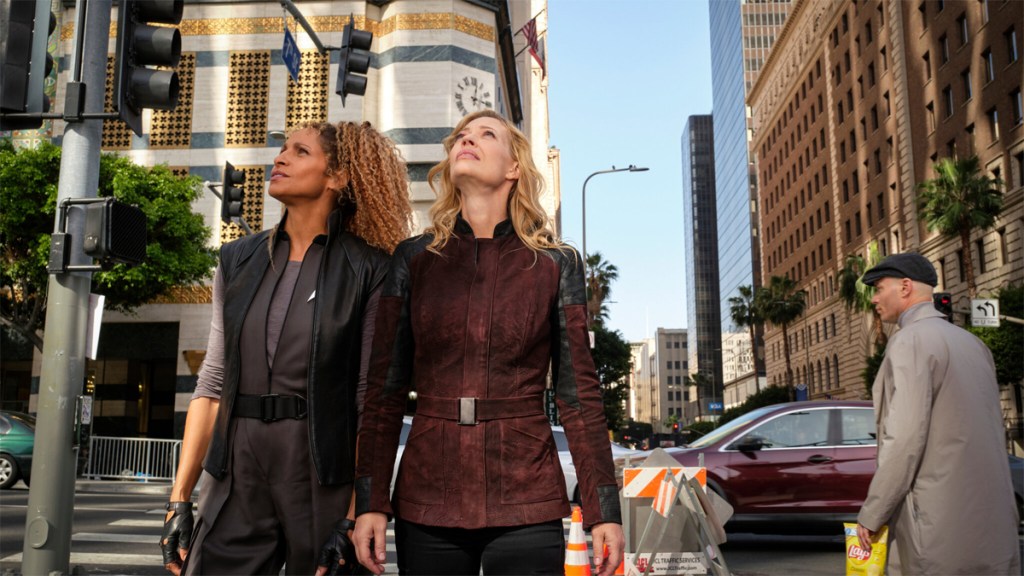
And Star Trek: Picard ? We know that the history of the Federation has changed, and the early impression suggests this will be a darker and more fascistic future for humanity. And to fix it? Picard and friends go back in time to 2024 . From what we know of Trek canon, World War III is supposed to begin in 2026.
Star Trek obviously doesn’t predict the future. The show has never been about telling us what will happen, only finding new ways of talking about what is happening now . There are no easy answers in science-fiction to the fears a lot of us currently have, whether about hypothetical conflicts or the very real violence happening in Ukraine during the Russian invasion. Once again though, people are scared and seriously talking about the threat of another world war. Perhaps what Star Trek can and has always offered fans is the hope that the same humans who commit world-ending atrocities might one day be capable of building a utopia.
Star Trek: The Center Seat is available to stream now in the UK on IMDb TV.

Chris Farnell
Chris Farnell is a freelance writer and the author of a novel, an anthology, a Doctor Who themed joke book and some supplementary RPG material. He…
Create a free profile to get unlimited access to exclusive videos, sweepstakes, and more!
Star Trek: Discovery tackles General Order One, World War III, and the Prime Directive
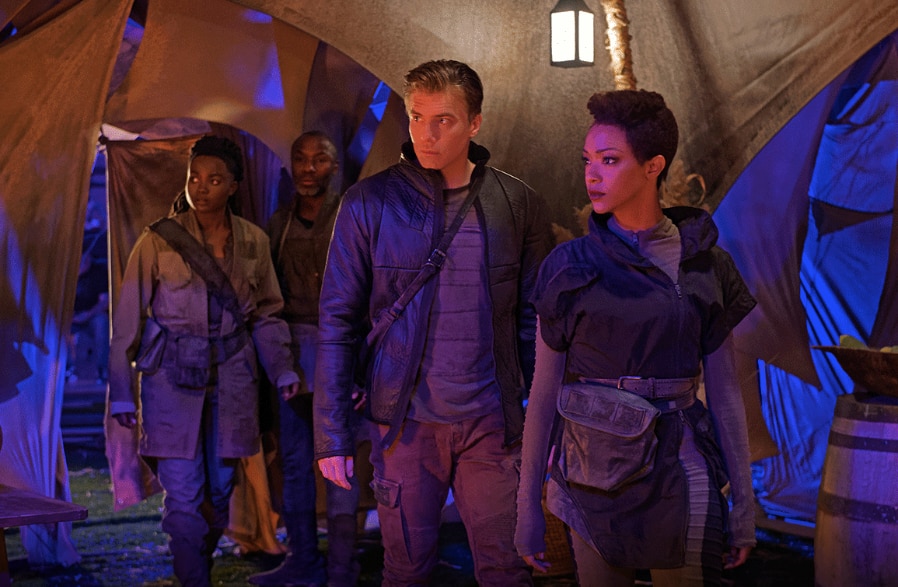
Credit: CBS
For old-school fans of Star Trek , the latest episode of Star Trek: Discovery , “New Eden,” puts a subtle twist on a very old idea. So if you’re brand new to Trek or a little hazy on the history of Starfleet and all their rules, you might have been wondering why Captain Pike was constantly talking about “General Order One.” Why couldn’t Burnham, Owosekun, and Pike reveal their awesome 23rd-century tech to the pre-warp humans living on this planet? And what the hell is this World War III that’s only like 20 years in our future? Here’s what it all means.
**SPOILER WARNING: Spoilers ahead for Star Trek: Discovery Episode 2, "New Eden."**
In “New Eden,” the USS Discovery accidentally rolls up on a planet populated by people (not aliens!) descended from humans who were mysteriously whisked away from Earth in the year 2053, during “World War III.” In Star Trek canon, characters have been referencing “World War III” since the original series, but there’s a tiny bit of confusion as to when, exactly, it happened. In the 1966 classic episode “Space Seed” (that’s the one with Khan), Spock referred to the Eugenics Wars on Earth as being “the last of your last so-called World Wars.” And, because Trek was written in the ‘60s, this future war — involving genetically enhanced dictators — was said to have taken place in the 1990s.
Since then, Trek canon has grappled with this detail, since, as far as anyone knows, there wasn’t a World War III in the ‘90s involving genetically engineered crazy people. However, there is a series of non-canon Trek novels called The Eugenics Wars , by Greg Cox, that convincingly retcons Khan and this war as a “secret war” taking place outside the awareness of the American population. These books rock, and they even reconcile the faux ’90s of old-school Trek with the "real" ‘90s as seen in the Star Trek: Voyager episode “Future’s End.”
In any case, even though Spock calls the '90s Eugenics Wars the “last of the World Wars,” Star Trek subsequently created a different World War III, and that’s the one that’s being referenced in the new Discovery episode. In the 1969 episode “The Savage Curtain,” Kirk and Spock team up with a simulacrum of Abraham Lincoln to duke it out with historical villains, including Genghis Khan and the Klingon messiah, Kahless the Unforgettable. But one of the other historical villains is a guy named Colonel Green, who Spock identities as a major jerk from World War III. Here’s the rub, though: This time World War III is said to have happened in the 21st century. From that point on, Star Trek canon stuck with the idea that a major world war happened in the 21st century.
In the very first episode of The Next Generation, “Encounter at Farpoint,” Q mocks Captain Picard by confronting him with simulacrums from World War III as proof that humanity sucks. (This happens a lot in Trek , aliens recreating historical figures or, more relevantly to “New Eden,” transporting humans from the past to distant planets. In the 1995 Star Trek: Voyager episode “The 37‘s,” the USS Voyager finds a bunch of humans from 1937 on an alien planet, including Amelia Earhart.)
Right now, Trek canon has World War III lasting from 2026 to 2053. In “New Eden” the crew discovers the far-flung humans are from 2053, which means the mysterious “Red Angel” aliens transported them across the galaxy the same year that war ended. In the 1996 movie Star Trek: First Contact , Picard and the crew of the USS Enterprise travel back in time to 2063, which Riker establishes is 10 years after the end of World War III. Funnily enough, the episode “New Eden” is directed by Jonathan Frakes , who is not only famous for playing Riker in The Next Generation series and films but also directed First Contact.
Speaking of “first contact,” the central conflict of “New Eden” is Pike’s insistence that the landing party can’t reveal that they are really humans from a contemporary Earth with advanced technology. Pike says that because the displaced humans didn’t get to the planet in a starship “that makes them pre-warp, subject to General Order One.” In all of Star Trek lore, General Order One is more commonly known as the Prime Directive, which basically states that Federation starships can’t interfere with the natural development of cultures on planets that don’t have interstellar travel. Basically, once a society achieves the ability to travel through space at speeds faster than light, it’s fair game to talk to them, but before that, it's forbidden to introduce advanced technology to a “lesser-developed” culture, even if it means saving a bunch of lives.
There are countless examples of people talking about — and debating about — the Prime Directive, in literally all versions of Star Trek, from the original series' “The Omega Glory” to the film Star Trek: Insurrection.
Obviously, like most fictional rules, the Prime Directive/General Order One exists only to be broken, in a variety of dramatic ways. In the 1989 Next Generation episode “Who Watches the Watchers,” Captain Picard tries to avoid breaking the Prime Directive after a group of villagers on a pre-industrial world believe he is a god and the Enterprise runs on magic.
In the 2013 movie Star Trek Into Darkness, the entire prologue of the film centers on the crew of the Enterprise trying to save a hunter-gatherer alien society from a volcano eruption, but of course they’re not supposed to show their faces or reveal the Enterprise while doing it. But because Kirk wants to save Spock, they do it anyway, and those aliens also seem to start worshiping the Enterprise as a deity. ( Into Darkness was co-written by Alex Kurtzman, the current showrunner of Discovery. )
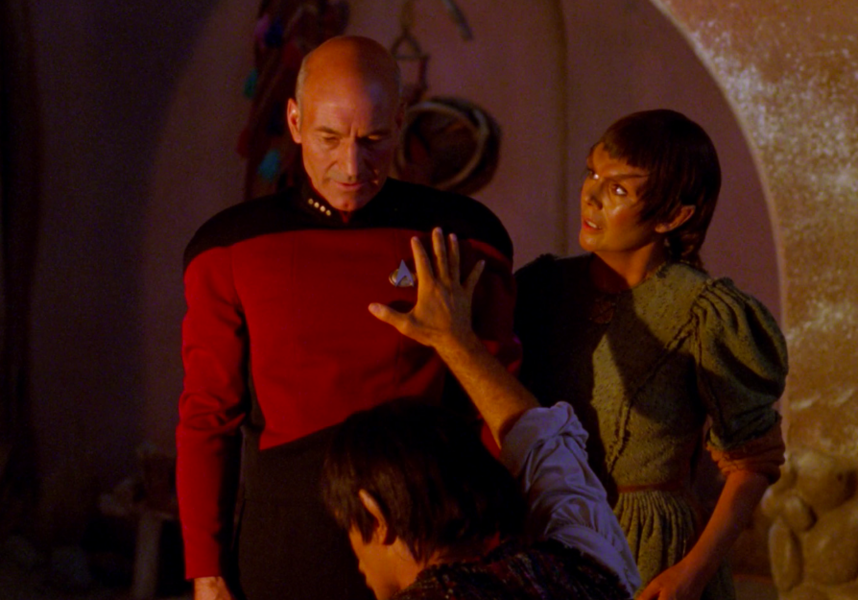
Picard has to prove he's NOT a god after General Order One/The Prime Directive gets violoated in 'The Next Generation.' (Credit: CBS)
In “New Eden,” Pike and Burnham quote science fiction legend Arthur C. Clarke: “Any significantly advanced technology is indistinguishable from magic,” a sentiment that obviously informs the entire plot of the episode. To a culture without advanced science, the things that the people on Discovery can do seem like magic.
Clarke is probably most famous for co-writing the screenplay for 2001: A Space Odyssey with Stanley Kubrick, but this Trek episode is subtly referencing one of Clarke’s novels: Childhood’s End . In a sense, that Clarke novel is like the reverse of a Star Trek plot. Instead of trying not to interfere in the development of a lesser developed culture, advanced aliens called the Overlords actually just show up on Earth in the middle of the Cold War and take over the planet, albeit peacefully. Like “New Eden,” the novel also ruminates on the places where religion and science intersect, and even suggests that the Overlords could have inspired biblical demons.
The newest season-long mystery for Star Trek: Discovery is connected to the mysterious “Red Angels,” which, like many Trek s before it, seems to be speculating on the place where faith and interference from advanced aliens might intersect. But, as “New Eden” demonstrates, sometimes people doing the divine intervention aren’t angels, they’re actually just humans from the 23rd century with their phasers on stun.
- Star Trek: Discovery
- Star Trek: Discovery Season 2
Related Stories

Bruce Almighty Teleprompter Scene Wasn't in Original Script

The Fast and the Furious: Remembering how the Fast Saga began

The Definitive Guide to The Munsters Adaptations

Remembering Evolution, David Duchovny's Wild 2001 Sci-fi Film

The Hunger Games Timeline, Briefly Explained

Winnie-The-Pooh: Blood and Honey Creators Tease Shared Universe

All of The Leprechaun Movies, Ranked

Eternal Sunshine Director Made Wild Request of Jim Carrey Ahead Of the Film's Shoot

Back to the Future Easter Eggs You Almost Certainly Never Saw Revealed

John Carpenter's The Thing: Definitive Oral History
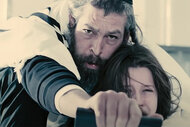
The Real-Life Story Behind 2012 Jewish Horror Film The Possession

Everything to Know About The Cancelled Miniseries Sequel to The Thing
Recommended for you.

Linda Hamilton on Resident Alien Role: "I'm Not the Funny Girl, I'm the Straight Man"

The Classic Twilight Zone Episode That Inspired Jordan Peele's Us

Resident Alien's Alan Tudyk on Harry's New Love Interest, Edi Patterson's Blue Avian

- by Witney Seibold
Similar News
- by Carly Thomas
- The Hollywood Reporter - Movie News

- by Bruce Haring
- Deadline Film + TV

- by Matthew Mosley
- Collider.com

- by Thomas Waschenfelder
- The Streamable

Star Trek: Strange New Worlds
- by John Orquiola
- ScreenRant.com

- by Hollywood Outbreak
- HollywoodOutbreak.com

- by Kevin Fraser

More to explore
Recently viewed.
Memory Beta, non-canon Star Trek Wiki
A friendly reminder regarding spoilers ! At present the expanded Trek universe is in a period of major upheaval with the continuations of Discovery and Prodigy , the advent of new eras in gaming with the Star Trek Adventures RPG , Star Trek: Infinite and Star Trek Online , as well as other post-57th Anniversary publications such as the ongoing IDW Star Trek comic and spin-off Star Trek: Defiant . Therefore, please be courteous to other users who may not be aware of current developments by using the {{ spoiler }}, {{ spoilers }} OR {{ majorspoiler }} tags when adding new information from sources less than six months old (even if it is minor info). Also, please do not include details in the summary bar when editing pages and do not anticipate making additions relating to sources not yet in release. THANK YOU
- World War III
- View history
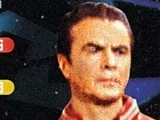
All items (6)

- Amber (Colonel)

- Regimental Volunteers


- Episode Reviews
- Film Reviews
- Book Reviews
- Model Reviews
- SNW Episodes
- SNW Production Info
- Picard News
- Picard Episode Guide
- Picard Production Info
- Prodigy News
- Prodigy Episodes Guide
- Prodigy Production Info
Content Creators
Latest sponsored content, the measure of an episode – lower decks s3e2- “the least dangerous game”, orange river – where did the gorn come from, the measure of an episode – lower decks s3e1- “grounded”, past creators.
- Become Guest Author With Treksphere
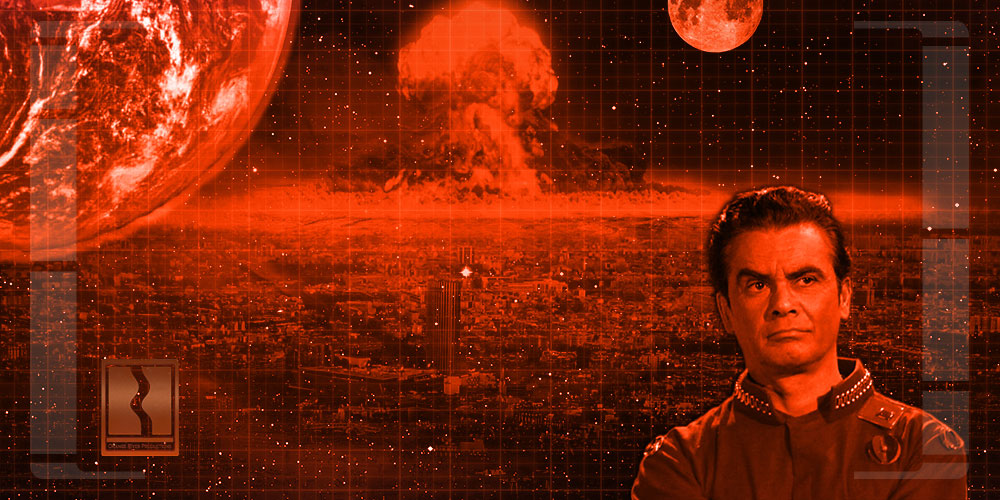
Orange River Media – Star Trek: Earth’s WWIII Explained
If you’ve ever had the displeasure of experiencing the effects of a tornado or other extreme weather event, you’ve likely heard blaring sirens and a long, ear-piercing tone on your radio or television.
This is the Emergency Alert System. But something we don’t think about is that both of these were originally designed to be heard during a nuclear attack, with automated announcements on the airwaves calling for people to seek shelter.
Of course, even if you’re inside a house or even a concrete building within the blast radius of a nuclear explosion, you won’t be so lucky. In a World War III-scale nuclear attack, with potentially thousands of bombs exchanged, entire cities and thus entire populations would be wiped from existence.
The most remote areas—rural areas—would be the best protected from immediate attack but would be subject to nuclear fallout and the breakdown of civil society just beyond their borders.
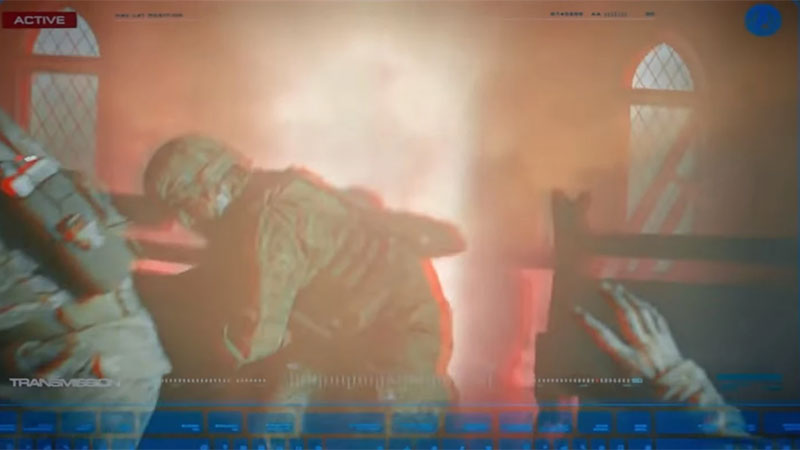
In Star Trek ’s fictional timeline, World War III is one of the most consequential events in human history. Occurring from 2026 to 2053, it serves as the culmination of the so-called Eugenics Wars–conflicts fought over genetic engineering–and results in the deaths of over 600 million people.
It sets humanity back culturally, resulting in a second Dark Age marked by disease, famine, and other ills amid the collapse of democratic governments and the rise of fascist dictatorships. Most nation-states effectively cease to exist on a functional level, with their powers usurped by corporations, terrorist factions, and despots.
But while against all odds scientific advancement continues, marked by the invention of faster-than-light travel by Zefram Cochrane, suffering would also continue for decades all around the globe. Earth’s transition to becoming a member of the interstellar community is a slow and painful one plagued by continued resource skirmishes, totalitarianism, and overall bleakness in society. These conditions would take until at least the early 22nd century to be resolved.
I want to examine the history that leads up to World War III, how it likely unfolds, what nations are affected (if any are unaffected), and how such a nuclear conflict might play out in real life. I also want to examine how the so-called “post-atomic horror” of the late 21 st century causes human society to unravel even more than it had before the war and how, with the help of the Vulcans, Earth is able to right itself and forge a new outlook in the 22 nd century. This is: Star Trek ’s World War III Explained.
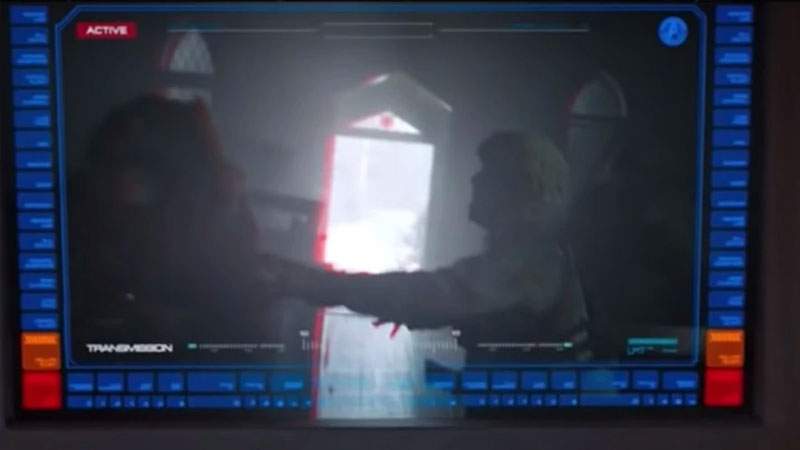
A third world war has been a growing concern ever since the end of the second one in 1945. While the establishment of the United Nations, the North Atlantic Treaty Organization (or NATO), and various other international institutions were meant to help prevent future conflicts between nations, these organizations have been in many ways ineffective. Escalation of the Cold War towards a nuclear exchange has always been a somewhat unlikely but still possible scenario, from the Cuban Missile Crisis to a couple of other close calls during the 1980s.
It was only because cooler heads prevailed in several of these situations that this escalation never occurred, and humanity lived to see another day. Powers such as the United States, our allies, and our adversaries possessing rather large nuclear stockpiles throughout modern history has been a double-edged sword. On the one hand, it has ensured via the M.A.D. doctrine—Mutually Assured Destruction—those nations are deterred from using these weapons due to their destructive capability.
On the other hand, though, all it takes is a radical leader of any one nation to launch an offensive strike and start a chain reaction that ends in nuclear annihilation. At the time The Original Series was written, there were hints that World War III was supposed to happen in the 1990s during the reign of Khan Noonien Singh and the Augments.
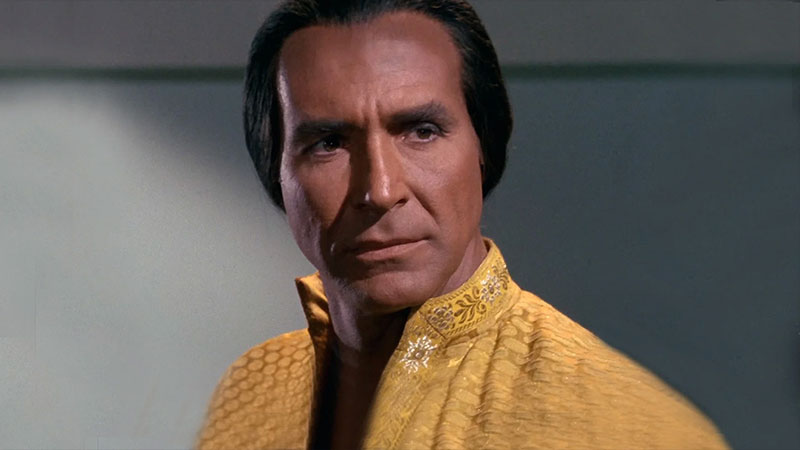
The global conflict among these Augment dictators—known as the Eugenics Wars—led to 30 million deaths. Since The Original Series , further distinctions have been made between the 1990s Eugenics Wars and the “real” World War III, a distinction introduced in Star Trek: First Contact and expounded upon in Enterprise and Discovery . I talk about this distinction in my video about Khan’s empire—link in the description.
While the conditions that ultimately led to World War III have their roots in the Eugenics Wars of the ‘90s, the continuous conflict itself is said, once again, to commence in 2026. Like the Eugenics Wars, one of the central issues—actually, the central issue—that causes the war to break out is genetic manipulation and human genome enhancement.
Call it a “Second Eugenics War.” It is the year 2026 when Colonel Phillip Green, a despotic militia leader, commands a faction of violent eco-terrorists whose actions lead to 37 million deaths. This is treated as a separate figure from the 30 million who died in the “First Eugenics War,” meaning between these two conflicts, the body count is higher than the number of civilians who died in the first two world wars COMBINED.
Some have also speculated that further root causes for this type of conflict lie in the political destabilization of several European countries during the 2020s. As we learn in The Next Generation episode “The High Ground” and the Deep Space Nine episode “Past Tense,” two years before the start of World War III, Ireland has been reunified through violence rather than peace, and France is torn between the Neo-Trotskyists and the Gaullists.
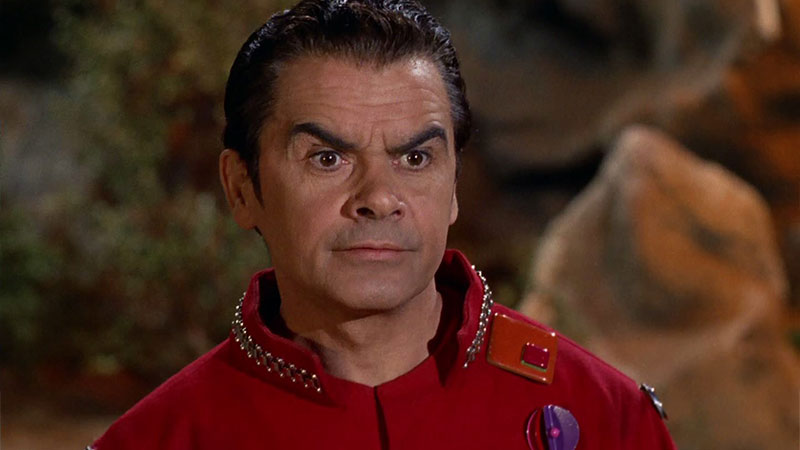
This type of political hyperpolarization definitely seems like it would be conducive to violence, and of course, for the first couple decades of World War III, such conflict would be marked less by the threat of a nuclear exchange and more so by, well, biological warfare. World War III is also denoted as the first world war that is fought primarily by “factions” instead of nation-states.
We can see parallels to both of these developments in our modern wars. Factions in the Syrian Civil War, for example, include opposing groups claiming to be the “legitimate” government of Syria, as well as the U.S.-allied Revolutionary Commando Army and, of course, ISIL. And of course, numerous leaders have used chemicals like sarin gas and other biological weapons against their people and the armies of other countries. Star Trek ’s Third World War takes both of these elements to their extreme and introduces additional complexities, such as the use of narcotics to control soldiers.
The “factions” are different than just opposing governments within a single territory, however—they are cross-border alliances that wield the influence of global superpowers. The Eastern Coalition of Nations is one faction mentioned in canon, in fact, the only one specified by name on the screen. First mentioned in Star Trek: First Contact , the Eastern Coalition, or ECON, was always intended—according to production sources—to be a stand-in for China.
The ECON would routinely launch missile attacks on the United States and its allies as alluded to in the film. The exact nature of the ECON’s political structure is never defined—various novels posit it’s an alliance of countries like China, India, Pakistan, and others, although the idea that India and Pakistan would form a military alliance seems like kind of a stretch. Ultimately, it may be an extension of Chinese imperialism—more on that in a bit.
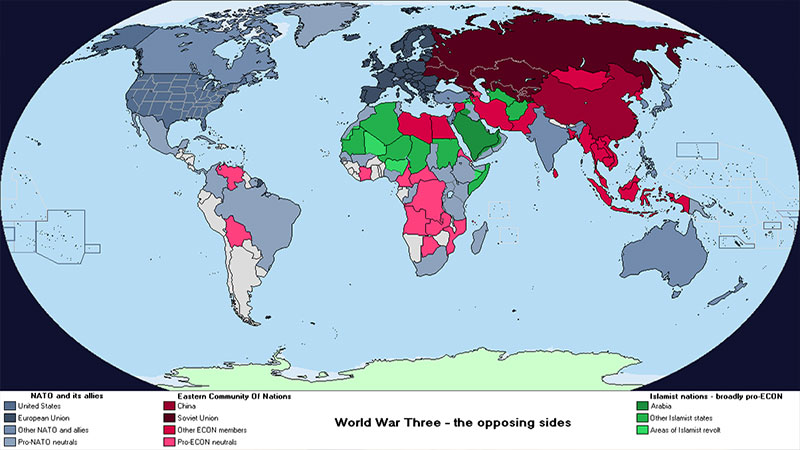

The Nuclear Exchange
During the final exchange, hundreds or even thousands of nuclear bombs—many in the multi-megaton range—are launched across land and sea. For context, a one-megaton blast over New York City would result in an estimated 1.3 million immediate fatalities. These bombs have yielded HUNDREDS of times that of the ones dropped on Hiroshima and Nagasaki COMBINED.
In fact, the most powerful nuclear bomb ever designed—the Soviet Union’s 100-megaton Tsar Bomba —generated a fireball radius of 7.92 kilometres. And the biggest nuclear test ever conducted, which was on a 50-megaton version of Tsar Bomba , generated a shockwave that circled the globe multiple times.
More likely, though, a nuclear war would be conducted with bombs that are “only” a few megatons in yield—probably something between the B83 nuclear bomb, the most powerful U.S. weapon currently in active service at 1.2 megatons, and the B53 bomb, the most powerful U.S. weapon in active service until 1997, which yielded 9 megatons.
A variant of the B53 warhead was equipped on the Titan II Missile system until it was dismantled towards the end of the Cold War. And the Titan II happens to be what was used for the outer casing on the Phoenix , Zefram Cochrane’s experimental warp vessel.
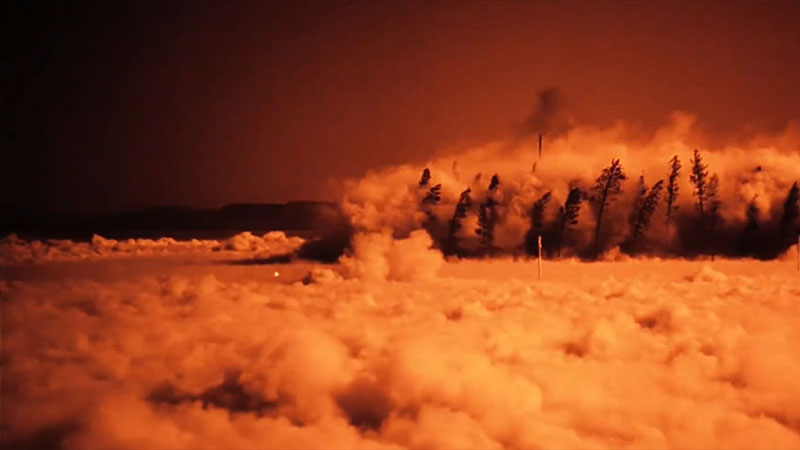
Anyway, those who don’t instantly die would suffer from radiation poisoning, the symptoms of which include nausea and vomiting, spontaneous bleeding, diarrhoea, and severely burnt skin that may peel off. Dying could take from several hours to several weeks, and 15% of survivors will eventually die of cancer as a result of exposure. The detonation of a SINGLE Dong-Feng 5, China’s current 5-megaton ICBM, would also create a fireball radius of 2.39 kilometres, a moderate blast damage radius—engulfed in fire—of 7.83 kilometres, a light blast damage radius of 20.1 kilometres, and a thermal radiation radius of 21.3 kilometres.
This means that everyone who isn’t instantly vaporized inside the fireball would still receive third-degree burns. But these people may not feel much pain as the burns will destroy nerve endings. In densely populated cities, millions would die immediately and millions more would be injured. The heaviest damage would happen within a 3.72-kilometre radius, with air 20 psi overpressure causing even heavy concrete buildings to collapse, and fatalities would approach 100%.
This is to mention nothing of the fallout, which could stretch downwind for HUNDREDS of kilometres. Multiple bombs of this yield would have to be dropped on each city to reach an estimated death count of half a billion, though many of these deaths could be people dying of radiation sickness weeks after the initial detonations. Either way, virtually every major urban area in every corner of the globe—New York, New Delhi, Moscow, London, Karachi, Jerusalem—they’re all being targeted. One source claims that the ECON has stricken first, with the New United Nations—a rump successor of the old U.N. composed of Western governments—acting in retaliation.
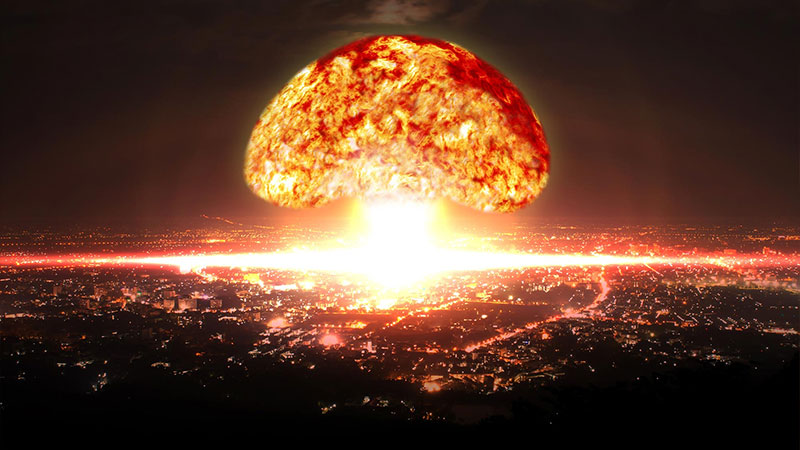
Okay, remember how I mentioned that the ECON could be a logical conclusion of Chinese imperialism? Well, in the decades leading up to this, China has been concentrating more and more political and economic clout in its region of the world. The ECON may be an outgrowth of the very real Shanghai Cooperation Organization, or Shanghai Pact, an economic, political, and security alliance created in 2001.
Among its members besides China? Several former Soviet states as well as…India and Pakistan. Yep. That’s how China, which currently possesses a relatively small nuclear arsenal, could gain access to enough nukes to rival the United States. The Shanghai Pact regularly conducts military exercises among members to promote cooperation in defence against terrorism and external threats. Its partners include ASEAN, or the Association of Southeast Asian Nations. And it comprises nearly half of Earth’s population.
The missile attacks are accompanied by cyberattacks and additional aerial bombings over smaller targets such as the one over Richmond, Indiana as seen in the Discovery episode “New Eden.” After the immediate attacks, conventional military forces mobilize into an offensive position as the ECON launches a land invasion of the North American continent—think Fallout . Many ground soldiers will be lost in the battle between the U.S. and the ECON.
Even in the aftermath, there will be little in the way of major urban infrastructure to defend. Rural areas will, again, for the time being, be the last vestiges of modern civilization as warlords compete over the remaining resources and people like Green carry out further atrocities against war-weary populations.
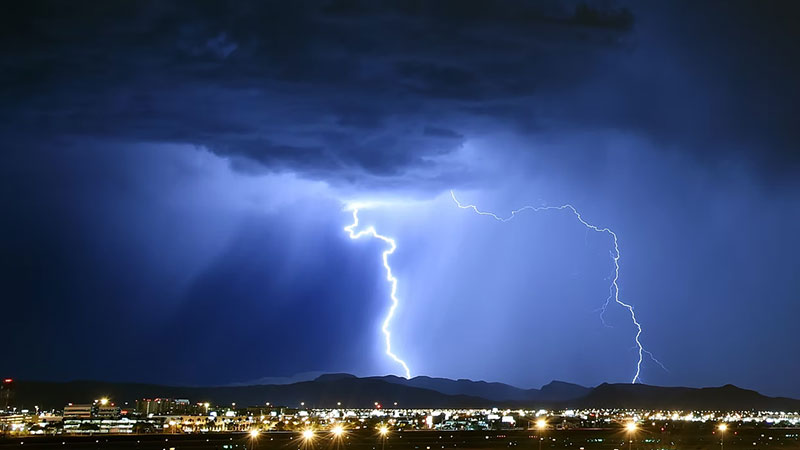
Nuclear Autumn
Just how bad is the aftermath going to get? Well, besides the collapse of national governments and the ensuing skirmishes over resources, nuclear fallout from the obliteration of major cities would threaten the health of survivors. Disease, famine, economic destitution and a new rise in authoritarianism—these are all understatements as to the severity of this post-World War III period in human history.
Climate scientists have written about the detrimental effects that even a “small” nuclear exchange—for example, between India and Pakistan—could cause. So much smoke would be produced that it could lower global temperatures “below those of the Little Ice Age of the fourteenth to nineteenth centuries, shortening the growing season” and putting 2 billion people at risk of starvation.
As Alex Ward wrote in a 2018 article for Vox , “Ira Helfand, a board director at the anti-nuclear war Physicians for Social Responsibility, calls this scenario a ‘nuclear autumn.’” [1] The severity of this conflict could be even starker in the event of a TRULY global war, involving—like I said—yields far beyond a bilateral exchange. The collapse of governments is one thing…this would threaten the extinction of the human race.
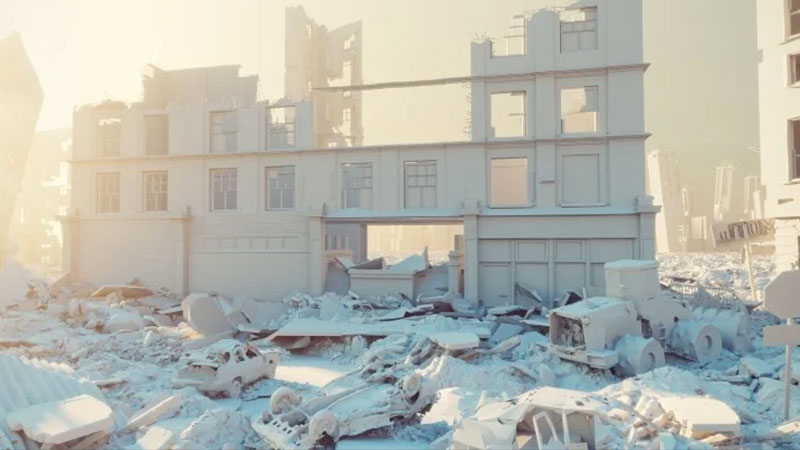
Nuclear Winter
The period following the detonation of nuclear weapons is referred to as the “post-atomic horror.” Lasting from 2053 to at least 2079, the year of the courtroom shown by Q to the Enterprise crew in The Next Generation pilot “Encounter at Farpoint,” this post-atomic horror was marked by the breakdown of civil society, denial of rights to alleged criminals, and extended nuclear winter.
This in particular would affect the global temperature rise and be devastating to crops and other necessities for comfortable human life. During this time, the war-stricken populations of various Earth countries fall victim to anarchy in some places and overt fascism in others. Colonel Green advocates for the euthanasia of those with radiation sickness, framing this genocide as “reject[ing] the impure and cast[ing] it out.” The New United Nations would have fallen by this point, and even after First Contact, leaders on Vulcan would be sceptical that humanity was ready to venture out into the stars.
A paper in the Journal of Geophysical Research paints a grim picture of what would happen in the absolute doomsday scenario of a nuclear winter. According to the paper, “the roughly 150 million tons of black smoke rising from burning cities and other areas would spread around to most of the planet over weeks.” This would plunge temperatures on the planet’s surface “by about 17 to 20 degrees Fahrenheit for the first few years” before coming back up by about 5 degrees Fahrenheit over the next decade.
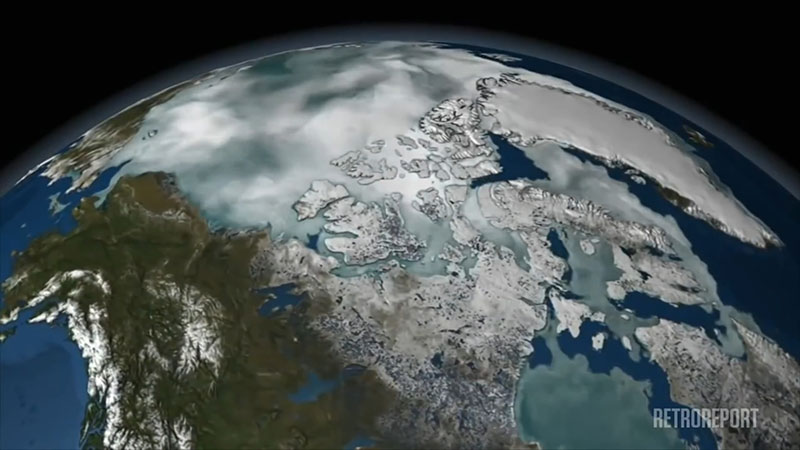
Cities in the Northern Hemisphere would suffer the worst of the blow, experiencing the coldest temperatures—through the entire globe, and particularly the global food supply chain would be affected. Global precipitation would also fall by about 45 per cent. And if that’s not enough, this nuclear exchange would deplete the Earth’s ozone layer, allowing large amounts of ultraviolet light to reach the surface and harming ecosystems. According to the paper, for years, a Caucasian person could not go outside without getting sunburned. [2]
Using the most optimistic outcome for a global war that kills over half a billion, this means that even ten years after the conflict ends—in other words, by 2063, when First Contact takes place—the environment would still be badly damaged, and too much radiation exposure would continue to cause cancer in starving humans. This would mean that Colonel Green’s calls for euthanasia of radiation-stricken people would spell a death sentence for, indeed, millions of people.
Also, this could partly be the reason that Cochrane looks older than he is in First Contact —James Cromwell was fifty-six years old during the time of the production, but Cochrane’s canon birth year is in the early 2030s—meaning he was in his early 30s in 2063. Various sources account for this discrepancy by speculating his aged appearance is, in fact, the result of radiation poisoning. Even if his birth year were retconned to be earlier than 2030, Cochrane and many of the other civilians at his facility in Montana would still be at high risk of developing cancers later in life from cumulative exposure to UV radiation and slow poisoning from radioactive fallout.
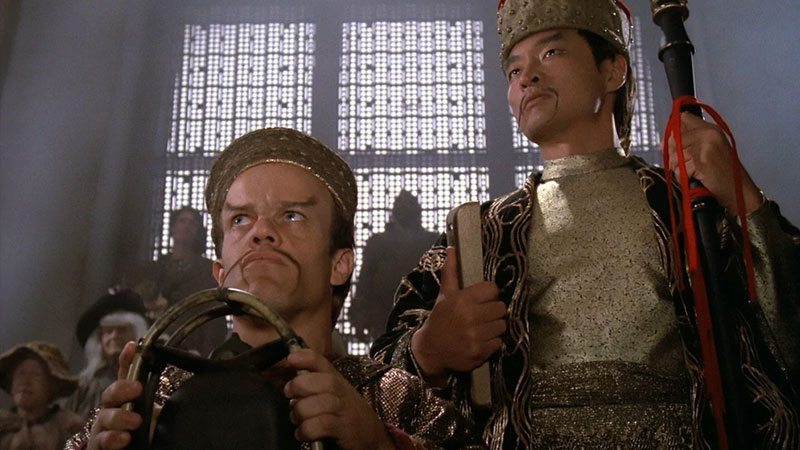
Earth’s Political Shakeup
We become privy to quite a bit of relevant information about post-atomic horror’s effects on human society through “Encounter at Farpoint.” One culture that we bear witness to during Q’s simulated trial has resorted to near barbarism. New legal systems that have popped up around the globe are characterized by martial law. Criminals are guilty until proven innocent, and judges hand down summary executions.
As Captain Picard observes, such cultures have taken the credo “Kill all the lawyers”—a line from Shakespeare’s King Henry VI —literally. Picard further remarks that due to these and other factors, many parts of Earth continue to be in a state of chaos well into the early 22 nd century. This “chaos” would entail things like gang rule over entire regions, such as by the drug-addled “fourth world mercenaries” who fought on behalf of factions like the ECON in World War III.
While all this is going on, Cochrane also helps usher in a new era for humanity in spaceflight. The 2063 first contact with the Vulcans becomes the defining moment in human history, as it sets humanity on a new path towards a more enlightened state.
While conditions deteriorate during the final quarter of the 21 st century, the seeds are sown that will later blossom into the idealistic society of the 22 nd century, with the resource-based New World Economy taking shape. In future videos, I may dive deeper into the details surrounding the formation of United Earth and how humanity could have achieved true prosperity. In the meantime, I hope that this has been an informative take on just exactly how Earth’s World War III could have unfolded in the Star Trek universe.
If you want to support my work even further, becoming a patron at patreon.com/orangeriver is a great way to do so.
Watch The Latest Video By Orange River Media Below
This article took almost a year to write, shoot, and edit from start to finish. I’ve been working on it off and on for most of 2021 so that I could deliver a quality product for your entertainment. I want to thank everyone involved in assisting with the production of this video, I want to thank you for making it possible.
Without the support of my subscribers, and especially without the support of my patrons and YouTube members, I wouldn’t have been able to make this, and I mean that sincerely. If you want to see more content like this, signing up to become a patron or member will help make that a reality. And you’ll receive other benefits like behind-the-scenes photos and videos, exclusive polls, merch discounts, and more.
We’ll be back to our regularly scheduled programming next week here at OrangeRiver…live long and prosper.
- Tags - Orange River Media , Sponsored Content
- , Latest , Star Trek: Universe
Join the conversation
Leave a comment, « due to gdpr, eu users need to be logged into facebook to read and leave comments », share this post, latest from treksphere.

Star Trek: The Original Series – The Enterprise Incident

Trek LCARS Android Apps By NSTEnterprises

The Measure of an Episode – Strange New Worlds S1E10- “A Quality of Mercy”

Star Trek is for Kids!: A Review of “My First Book of Space” & “My First Book of Colors”

Where the Blood Poppies Blow: A Review of Star Trek: Picard: Second Self

Wrath of Khan – 40 years on…

The Measure of an Episode – Strange New Worlds S1E9 – “All Those Who Wander”
Star Trek and all related marks, logos and characters are solely owned by CBS Studios Inc. Treksphere & Trekfanproductions are not endorsed by, sponsored by, nor affiliated with ViacomCBS, CBS Studios Inc, Paramount Pictures, or any other Star Trek franchise. Treksphere.com is a fan website. No commercial exhibition or distribution of its content is permitted. No alleged independent rights will be asserted against ViacomCBS, CBS Studios Inc or Paramount Pictures.”
Treksphere.com is a participant in the Amazon Services LLC Associates Program, an affiliate advertising program designed to provide a means for us to earn fees by linking to Amazon.com and affiliated sites. Treksphere.com is not supported, sponsored, or endorsed by Amazon Services LLC
© 2016 – 2023 TREKSPHERE & TREKFANPRODUCTIONS ALL RIGHTS RESERVED, ANY REDISTRIBUTION OR REPRODUCTION OF PART OR ALL OF THE CONTENTS IN ANY FORM IS PROHIBITED. YOU MAY NOT, EXCEPT WITH OUR EXPRESS WRITTEN PERMISSION, DISTRIBUTE OR COMMERCIALLY EXPLOIT THE CONTENT.
Privacy Overview

- View history
- 2.1 Episodes
- 2.2 External link
- The Third World War on Earth ends. Six hundred million people are dead, numerous major cities are destroyed or heavily damaged, and most of the major governments are in ruins. One of the major combatants in the war was the Eastern Coalition , or ECON. ( Star Trek: First Contact ; ENT : " Terra Prime "; SNW : " Strange New Worlds ")
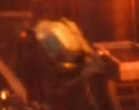
A shuttle in the year 2053

The East Fork Presbyterian Church is strike by nuclear blast.
- During an attack with nuclear weapons on Richmond, Indiana , a group of Humans sheltered in the local East Fork Presbyterian Church is saved by Gabrielle Burnham and transported to Terralysium . ( DIS : " New Eden ")
Appendices [ ]
Episodes [ ].
- DIS : " New Eden " (in part)
External link [ ]
- 2053 at Memory Beta , the wiki for licensed Star Trek works
- 3 Ancient humanoid
Star Trek Takes Place After an Apocalypse on Earth - Here's What Happened
After a nuclear war that cost millions of lives, the genocidal aftermath laid a foundation for both xenophobia and utopia in Star Trek.
From its first episodes, Star Trek has been a franchise about humanity, and its potential to evolve into a better version of itself. Gene Roddenberry's passion project set out to explore new worlds, and the ethical and moral outcomes of often painful decisions. But buried in Trek 's lore is the secret key as to why its utopian standards are so important to its civilization. World War III had scorched the Earth, and the scars of the post-atomic horror were still fresh when the United Federation of Planets was founded.
The roots of that final World War are slightly confusing. The original 1966 Star Trek series introduced the Eugenics War in "Space Seed," a conflict that burned through the 1990s as an army of genetically engineered humans tried to overtake Earth. The tyrannical Khan Noonian Singh was arguably the most peaceful of these superhuman warlords, but millions of lives were still lost. Though Spock calls this the Third World War, 1969's "The Savage Curtain" introduces a figure that later becomes the architect of a "true" world war in the mid 21st century, Colonel Green.
RELATED: Kate Mulgrew Explains Exactly Why She's Returning to Star Trek
Colonel Phillip Green is described in "The Savage Curtain" as the leader of a genocidal war. Star Trek: Enterprise followed up on Green's history, with an infographic seen in "In a Mirror, Darkly," naming him responsible for thirty-seven million deaths. The fourth season Enterprise episode "Demons" would then offer a stark new clarity to Green's actions. Obsessed with human genetic purity after years of radiation exposure due to a world war he engineered, Green continued to call for genocide to purge undesirable genetics from the human race. Green is the architect of a horror that continued for decades after the atomic war.
Despite Green's demand for further slaughter, humanity slowly began to recover. Less than a decade after his gruesome speech, scientist and inventor Zefram Cochrane would make first contact with the Vulcans in 2063. It was a watershed moment for humanity, the first step towards that better future and its network of allied worlds. But it didn't change the world overnight. Pockets of irradiated land and genetic mutants would persist into the 22nd century and, with them, chaos and distrust would continue to mar Earth.
RELATED: Star Trek: The Next Generation - Why Denise Crosby's Tasha Yar Left After Season 1
Star Trek: The Next Generation premiered in 1987 with the feature-length two-part story "Encounter at Farpoint." Fan-favorite character Q ( John de Lancie ) makes his introduction virtually alongside the new crew, and the omnipotent alien is here to put humanity on trial. He uses a post-World War III tribunal hall to do it, providing the franchise's first glimpse of the fallout and the chaos that laid the foundation for today's Federation. Among Q's throng are drug-addled soldiers, mutants and poverty-stricken rabble, who care more about entertainment than actual justice. As Picard notes, the hall appears as it would have been, and Troi, the Betazed empath, remarks on its lack of illusion.
Set a century prior to Captain Kirk's era, Enterprise would reveal that the war and its ghastly aftermath had already become fuel for award-bait films. Yet the trials of the post-atomic horror had one last challenge to offer mankind, rooted in all-too-familiar xenophobia. The 22nd century saw the Terra Prime terrorist movement attempt to echo similar real-world attempts to gin up the hate, expulsion and murder of those deemed "other." Terra Prime and its founder, John Paxton, not only believed in the genocidal purity ethics of Colonel Green but held the Vulcans directly responsible for not intervening earlier, preventing the war and its horrific aftermath.
RELATED: Star Trek's Most Iconic Technology Exists Because of Budget Constraints
Terra Prime's extremist views came to include seeing all non-human life as a threat, and they engaged in a series of attempts to destroy the Federation. The crew of the NX-01 Enterprise managed to corner Paxton and arrest him. Paxton's attempt to build a separatist Earth by humans and for humans ultimately failed. By Picard's era, the horrors of WWIII and its aftermath had at last become fodder for the history books, an era to learn from and to never repeat.
With series creator Gene Roddenberry a veteran of the last world war, the warnings of the outcome of another great and terrible war is more than window dressing. Like fellow creator Rod Serling, buried inside Roddenberry's most famous work is the never-ending plea to humanity to be better. And with more than words, Star Trek has shown its audience horrific but useful glimpses of what the consequences should be if humanity ever fails its greatest test.
KEEP READING: Star Trek: Strange New Worlds - Why the Christopher Pike-Led Series Is Long Overdue

Star Trek's Jonathan Frakes Calls One Strange New Worlds Season 3 Episode His 'Best' Ever
"Star Trek: Strange New Worlds" has a knack for proving skeptics wrong. You say Paramount+ can't do a prequel "Star Trek" series that reimagines iconic characters like Spock, Kirk, and Uhura with a cast of new actors? Watch them. Think it's impossible to strike the original series' balance between earnest pathos, sci-fi geekery, warm-hearted hijinks, and indelible camp? Think again. Don't even get this show started on which genres do and don't check classic "Star Trek" boxes; it'll blow your personal definition of classic "Trek" wide open with a Medieval costume drama, an animation-live action crossover, a musical, or -- in the upcoming season, according to Variety -- a "Hollywood murder mystery."
In Variety's new cover story about the future of the franchise Gene Roddenberry first created in 1966, the future of "Star Trek" is bright. The dynamic, weird, hilarious, and sometimes heartbreaking prequel series "Star Trek: Strange New Worlds" comes across as the central star in that constellation, and the powers that be don't seem inclined to stop trying new things with the series anytime soon. "As long as we're in storytelling that is cogent and sure-handed, I'm not sure there is [any genre 'Strange New Worlds' can't do]," says series co-showrunner and executive producer Akiva Goldsman. "Could it do Muppets? Sure. Could it do black and white, silent, slapstick? Maybe!"
Read more: Star Trek's Gene Roddenberry Always Regretted Cutting One Character From The Show
That's High Praise
Thrillingly, the show is bringing Jonathan Frakes, the actor and filmmaker behind season 2's "Star Trek: Lower Decks" crossover episode "Those Old Scientists," on to direct the murder mystery episode of season 3. Frakes, who played William Riker for seven seasons of "Star Trek: The Next Generation" as well as several movies and the final season of "Star Trek: Picard," says the upcoming genre outing is "the best episode of television [he's] ever done." That's certainly saying something coming from the actor-turned-director, as he's stepped behind the camera for 29 episodes of "Trek" and counting.
In addition to "Those Old Scientists," Frakes' past "Star Trek" directorial efforts include several standout episodes of "The Next Generation," from the trippy time loop story "Cause and Effect" to the courtroom drama "The Drumhead" to "The Offspring," a one-off in which Data (Brent Spiner) raises a child android. Other well-received "Trek" episodes directed by Frakes include the Odo-centric "Deep Space Nine" premiere "The Search, Part II," the intense Section 31-set "Star Trek: Discovery" episode "Project Daedalus," and two of the best episodes of "Star Trek: Picard" season 3 -- and the show in general, for that matter.
With so many epic "Trek" episodes under his belt, the fact that Frakes thinks his return to "Strange New Worlds" is a career-high makes us all the more excited for it. Elsewhere in the cover story, the actor-director spoke positively about the behind-the-scenes teams that have brought the Paramount+ era of "Trek" together. "The scope was so much different than anything we had ever done on 'Next Gen,'" Frakes said when talking about the property's epic return to TV in the 2010s. "Every department has the resources to create." Fans will get to see just what they've created with the new murder mystery episode when "Star Trek: Strange New Worlds" returns to the streamer sometime in 2025.
Read the original article on SlashFilm .
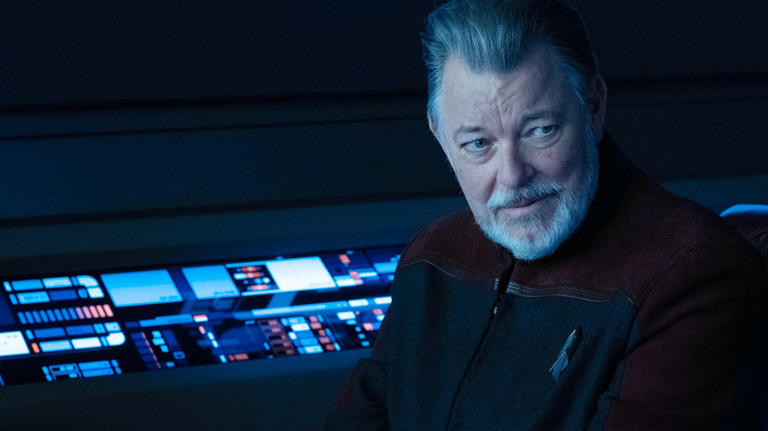
- Share full article

‘Star Trek’ Fan Leaves Behind a Collection Like No One Has Done Before
When Troy Nelson died, his shelves were filled to the rafters with memorabilia from the popular franchise. Soon, the massive collection will be boldly going, going, gone.
Evan Browne said her brother Troy’s love of “Star Trek” began with the original series, which he and his siblings watched at dinnertime. Credit... Connie Aramaki for The New York Times
Supported by

By Sopan Deb
- Published April 1, 2024 Updated April 3, 2024
Editors’ Note, April 2, 2024: After publication, The Times learned that Troy and Andrew Nelson were named in a civil lawsuit filed in Pierce County Superior Court in 1998, in which they were accused of molesting three disabled adults in a state-licensed facility that they operated. After a six-week jury trial, Washington State was ordered to pay $17.8 million to the plaintiffs. The state said it intended to appeal but missed the deadline and paid the victims. The Nelson brothers denied the allegations and were never criminally charged.
Troy Nelson and his younger brother Andrew were almost inseparable.
The two youngest of six, they were born two years apart. They lived together in their childhood home in Bremerton, Wash., for more than half a century. Near their home, there is a park bench on which they carved their initials as young boys.
The Nelson brothers never married or had children. They worked together at the same senior home. They even once, as teenagers, dated the same girl at the same time while working different shifts at the same pizza shop. This lasted a week until they realized it.
“Two parts of one body,” Evan Browne, their older sister, said of their relationship in an interview.
On Feb. 28, Andrew Nelson, who had been treated for cancer for years, went to feed the chickens and ducks that were gifts from Ms. Browne to her brothers. He had a heart attack and died. He was 55. Just hours later, Troy Nelson, who was stricken with grief, took his own life. He was 57.
“He had talked about it before,” Browne, 66, said, tearfully. “He said, ‘Hey, if Andrew goes, I’m out of here. I’m checking out.’ Andrew would say the same thing, and then it really happened .”

What Troy Nelson left behind has become a sensation. After his death, family members posted pictures on social media of his massive — and, really, the keyword is massive — collection of “Star Trek” memorabilia, which have now been shared thousands of times.
The items took up two living rooms and a bedroom, all lined with bookshelves, according to Elena Hamel, one of the brothers’ nieces. The centers of the rooms were lined with additional bookshelves — all packed to the brim — to create aisles. There were jewelry cabinets serving as display cases.
The shelves contained action figures. Dolls. Models of ships. Posters. Ornaments. Lunchboxes. Legos. Several toy phasers and tricorders. (For non-Trek fans, the phaser is a weapon, and a tricorder is, essentially, a fancy smartphone.) Multiple “Star Trek” lamps. (Yes, there are “Star Trek” lamps.) Trading cards. Comic books. Trek-themed Geeki Tikis (stylized tiki mugs). Life-size cutouts of famous characters. A life-size captain’s chair.
While it’s impossible to account for every private collector in the world, Troy Nelson’s collection is almost assuredly among the largest — if not the largest.
The last additions to the collection came in the final weeks of his life: Stuffed rabbits in “Star Trek” uniforms. “I’ve never seen a collection that size,” said Russ Haslage, the president of the International Federation of Trekkers , a “Star Trek”-themed nonprofit that Haslage founded with Gene Roddenberry, the creator of the franchise.
Haslage’s organization opened in 2020 a “Star Trek” museum in Sandusky, Ohio, that has received donations of memorabilia from estates. Those collections “pale in comparison” to Mr. Nelson’s, he said. (Haslage has reached out to the family to ask about donations from the collection.)
The older brother’s love of “Star Trek” began with the original series, which he’d watch with his siblings.
“It was our dinner meal,” Ms. Browne said. “When we had dinner, we were sitting in front of ‘Star Trek.’”
Troy Nelson began collecting in the late-1970s. His first acquisition was a model version of the Starship Enterprise. Then came Star Trek conventions. Why the franchise was such a draw to him remains a mystery to his family.
“I really can’t say. I mean, other than the fact that he was brainwashed with it at dinner time,” Browne said, laughing. “That sounds ridiculous. When we grew up, it’s like, ‘Dinner is at this time. And if you don’t get here at this time, you don’t get dinner.’ So it might’ve been a comfort for him .”
Troy Nelson would often monitor sites like eBay for items he didn’t have. On several occasions, he would express frustration on losing out on an item before being able to bid on it. Until he found out the reason.
“Andrew already got it for him,” Ms. Browne recalled.
Obsessive “Star Trek” fandom has long become an indelible part of pop culture, especially as the franchise — which has spawned several television series, movies, novels and comics — has been a long-running institution. There have been documentaries that have studied the subject, such as “Trekkies” in 1997. It’s been lampooned on “The Simpsons,” “Saturday Night Live” and “Family Guy,” and become a story line in an episode of “The West Wing,” among many others. For dedicated fans, accruing collectibles isn’t uncommon.
“When you collect these things, you’re closer to that genre that you enjoy so much,” Haslage said. “When I first started in 1979, I was grabbing everything I could get my hands on because it was cool, and it was a piece of the whole ‘Star Trek’ mythos. If you have these pieces, you’re a part of that universe in some way.”
It turns out that collecting is a pursuit that runs in the family.
Andrew Nelson collected mall swords, Ryobi-branded tools and statues of warrior women, like Xena, the warrior princess .
Browne’s house has a wall with thousands of smashed pennies and her living room windows are full of glass sugar and creamer bowls.
Browne’s father, Bud Peers, collected salt and pepper shakers, guns and knives. Troy and Andrew’s father, Norman Nelson, collected scrap metal and wood.
Hamel has 17 Christmas trees, all fully decorated with separate themes.
Browne’s son, Michael, who is 36, collects anything and everything related to black bears.
“ When you have a large collection like that and it’s displayed like that,” Hamel said, “and it’s something that is important to you, it’s often really calming to be in a space like that. It’s just all the things that you love. It’s soothing.”
As far as Browne knew, Troy had no history of mental illness or any previous suicide attempts. After Andrew died, she received a distraught and frantic call from Troy with the news. She told him that she was on her way.
Ms. Browne said she called him when she got to the Tacoma Bridge. No answer. And then again, at the Manette Bridge. No answer. When she reached their home, the back door was open. And then she found him. The phone call was the last time they spoke.
Troy Nelson did not leave a note, but did leave some things meticulously arranged by his computer, including a key to the house, burial plans for the two brothers, and bills.
“ I don’t know really what I thought,” Ms. Browne said. “All I could do was just scream.”
The Nelson family is boxing up Troy’s “Star Trek” collection to prepare it for auction. Andrew’s ashes will be placed in an urn carved in the likeness of the supermodel Bettie Page . (He was a fan.) Troy’s ashes will be placed in a “Star Trek” lunchbox.
If you are having thoughts of suicide, call or text 988 to reach the 988 Suicide and Crisis Lifeline or go to SpeakingOfSuicide.com/resources for a list of additional resources.
Sopan Deb is a Times reporter covering breaking news and culture. More about Sopan Deb
Advertisement
Screen Rant
Star trek: discovery season 5, episode 3 ending explained.
Star Trek: Discovery season 5's treasure hunt brings the USS Discovery to Trill for the next clue, but Moll and L'ak may be one step ahead of Burnham.
Warning: SPOILERS for Star Trek: Discovery Season 5, Episode 3 - "Jinaal"
- Moll and L'ak are setting a trap on the USS Discovery - Adira may be in danger.
- The Progenitors' treasure was safeguarded by six secret scientists in the 24th century.
- Commander Rayner struggles to connect with the crew - Burnham seeks answers beyond the treasure.
Star Trek: Discovery season 5, episode 3, "Jinaal", brings Captain Michael Burnham (Sonequa Martin-Green) and the USS Discovery one step closer to finding the Progenitors' treasure, but little do they know Moll (Eve Harlow) and L'ak (Elias Toufexis) are making insidious moves against them. Written by Kyle Jarrow and Lauren Wilkinson and directed by Andi Armaganian, the third episode of Star Trek: Discovery season 5 splits the action between the planet Trill and Commander Rayner (Callum Keith Renne) and Ambassador Saru (Doug Jones) having difficulty adjusting to their new assignments.
Captain Burnham and Cleveland Booker (David Ajala) pass a test created by Jinaal (Wilson Cruz) with flying colors. Jinaal was the host of a Trill symbiont who was alive in the 24th century, and he was part of a coalition of scientists, which included the Romulan Doctor Vellek (Michael Copeman) who hid the Progenitors' technology to protect the galaxy. A Trill ritual allowed Jinaal to occupy the body of Dr. Hugh Culber (Wilson Cruz), and the Trill took steps to ensure Burnham and Book were "worthy" of finding the Progenitors' treasure. However, Discovery's crew may unwittingly be walking into a trap set up by Moll and L'ak.
Star Trek: Discovery Season 5 Returning Cast & New Character Guide
What did moll attach to adira at the end of star trek: discovery season 5, episode 3, moll and l'ak are making a move on the uss discovery.
After Jinaal departed Dr. Culber's body and he, Captain Burnham, and Cleveland Booker beamed back aboard the USS Discovery, Moll secretly placed a device on the arm of Ensign Adira Tal (Blu del Barrio). The Trills were warned by Burnham that Moll and L'ak would come seeking the clue hidden on Trill, but Guardian Xi (Andreas Apergis) was certain Trill would withstand any aggressive act. But what the Trill didn't anticipate was Moll, who is human, infiltrating the Trill during their ritual and planting something on Discovery's young Ensign.
32nd-century technology in Star Trek: Discovery is made of programmable matter, which explains why Moll's device disappeared.
The tiny device Moll hid on Adira's arm quickly vanished, but there are a few possibilities for what the tech could be. The device could be a tracker of some sort ; since Moll knows Burnham found the clue on Trill, she could be ensuring that she and her lover, L'ak, will be able to follow the USS Discovery wherever it jumps to next. The device could also be some kind of communicator or a weapon that could incapacitate Adira. It may also be a tiny transporter that would allow Adira to be beamed to L'ak's ship where they could be held hostage.
Moll, who likely was incognito in the Trill caves for the duration of Star Trek: Discovery, probably overheard Adira's conversations with their love interest, Gray Tal (Ian Alexander), and their decision to break up. Adira, who is young and inexperienced, is the ideal target for Moll and L'ak to plant a device on. This may be the end of Adira and Gray's Star Trek: Discovery love story . Their breakup is also an interesting juxtaposition to Moll and L'ak, who are lovers themselves but are committed to each other and are on the same journey, unlike the young Trill and Ensign.
Everything Star Trek: Discovery Season 5, Episode 3 Revealed About The Progenitors' Treasure
Great steps were taken to protect the ancient power to create life.
Jinaal provided a wealth of new information about what happened to the Progenitors' treasure after the events of Star Trek: The Next Generation 's "The Chase." According to Jinaal, in the 24th century, the President of the United Federation of Planets - possibly Jaresh-Inyo (Herschel Sparber) from Star Trek: Deep Space Nine - secretly assembled a team of 6 Federation and non-Federation scientists , including Jinaal and Dr. Vellek. After years of researching the Progenitors' message, they found the ancient technology in a sector of deep space. One of the scientists died horribly when they tried to activate it.
The scientists made it their life's work to safeguard the Progenitors' technology.
The scientists decided to hide the Progenitors' treasure instead of turning it over to the Federation. At this point, Star Trek: Deep Space Nine 's Dominion War engulfed the Alpha Quadrant, and anyone could be a Changeling. Jinaal and his colleagues made a pact and lied to the Federation about the treasure while redacting themselves from every database. The scientists made it their life's work to safeguard the Progenitors' technology, eventually creating a series of clues which they determined would deem whoever could find the treasure "worthy" of having it.
Meanwhile, on the USS Discovery, Commander Paul Stamets (Anthony Rapp) decoded Dr. Vellek's Romulant tricorder and learned more about the Progenitors' treasure. Stamets was excited about the applications of the Progenitors' technology, which is billions of years old. The Progenitors could "design new lifeforms, accelerate evolution, modify ecosystems." Stamets added, "If it can create life, then, in theory, it might also be possible to re-animate dead organisms."
The Progenitors' technology sounds like the Genesis Device from Star Trek II: The Wrath of Khan but with even more potential to create - or destroy - life.
Saru Made A Faux Pas About Announcing His Wedding To T'Rina
Saru has a lot to learn about love and politics.
The newly-minted Ambassador Saru performed well in his first delegation meeting about the rising threat of the Breen , but he made a faux pas when it came to announcing his engagement to President T'Rina (Tara Rosling). T'Rina's political aide, Duvin (Victor Andres Trelles Turgeon), became concerned about the optics of the President of Ni'Var siding with the Kelpien Ambassador, especially when the news of their engagement becomes public. Saru listened to Duvin and got cold feet about announcing his engagement to T'Rina.
Duvin feared T'Rina's Presidential power weakening among Vulcan purists if she marries an offworlder.
Ultimately, T'Rina made Saru realize that making a public announcement is better than news of their engagement leaking out, which would make it seem like the couple were hiding something scandalous. Saru confessed his inexperience in romance and politics, but T'Rina has enough savviness for them both. Saru and T'Rina's wedding is on, and will likely take place sometime during Star Trek: Discovery season 5.
Commander Rayner Will Have Trouble Fitting In With The USS Discovery Crew
Rayner's not looking to connect and make friends on discovery.
Now demoted to Commander as the new First Officer of the USS Discovery, Rayner was ordered by Captain Burnham to meet with and forge connections with the USS Discovery's crew. But Rayner was more interested in hunting Moll and L'ak , and he only met with Discovery's crew members for brief, unfriendly intervals, to the disgust of Lieutenant Sylvia Tilly (Mary Wiseman). Rayner made no real inroads in connecting with Discovery's personnel, although he paid attention and made insightful observations about each Starfleet Officer.
Commander Rayner not immediately fitting in on Discovery is more realistic.
Tilly was right that Commander Rayner, who was on a new ship after an embarrassing demotion, compensated by acting boorishly to hide how difficult it was for him. To Star Trek: Discovery season 5's credit, Commander Rayner not immediately fitting in on Discovery is more realistic than the Kellerun Starfleet Officer being welcomed with open arms. Rayner will have a long road to earning the respect of the USS Discovery's crew, and vice versa, although Captain Burnham may not be pleased with how her new Number One alienated himself from her friends and family aboard the Disco.
Rayner explained he purposely kept a professional distance from his crew when he was Captain of the USS Antares.
Captain Burnham Is Searching For Something Bigger Than The Progenitors' Treasure
Michael has big questions she needs answered.
At the start of Star Trek: Discovery season 5, episode 2 , "Under the Twin Moons," Captain Burnham confessed that she used to find purpose in her missions, but now she is searching for something more. A greater meaning. Jinaal assessed this about Burnham on Trill, and Michael related the same to Dr. Hugh Culber. For Burnham, the Progenitors' treasure isn't just technology that can alter the destiny of the Federation, but it could mean answers Michael is seeking about the meaning of life, itself.
Captain Burnham's quest may reflect Star Trek: Discovery looking inward for something more profound.
Interestingly, Captain Burnham's spiritual journey in Star Trek: Discovery season 5 loosely echoes someone from her adoptive Vulcan family: Sybok (Lawrence Luckinbill). In Star Trek V: The Final Frontier, Spock's criminal older half-brother sought God in the mythical world of Sha Ka Ree. Sybok's quest was fueled by his own hubris, but the Vulcan truly did want to see and gain answers from the divine. Michael wants different answers than Sybok did, and Captain Burnham's quest may reflect Star Trek: Discovery looking inward for something more profound than its nature as an action-adventure Star Trek series.
Where The Next Clue To The Progenitors' Treasure Will Take Discovery
Discovery may take a pause in the treasure hunt.
Interestingly, Star Trek: Discovery season 5, episode 3's ending, doesn't directly lead to the USS Discovery's next destination after they depart Trill. Captain Burnham told Dr. Culber that the clue Jinaal gave them was being analyzed, but leads to the Tzenkethi system . However, Discovery is stymied by red tape as diplomats sort out the legalities of entering the Tzenkethi system. This could indicate a pause in Star Trek: Discovery season 5's treasure hunt in episode 4, "Face the Strange."
The Tzenkethi were a race that was never seen but was mentioned as enemies of the Federation on Star Trek: Deep Space Nine , furthering Star Trek: Discovery 's DS9 connections.
However, it's a safe bet whatever Moll planted on Adira will lead to the next crisis Captain Burnham will have to contend with . With three more pieces needed to complete the map to the Progenitors' treasure and 7 more episodes to go in Star Trek: Discovery season 5, Captain Burnham's hunt may take its first, strange detour.
New episodes of Star Trek: Discovery stream Thursdays on Paramount+
*Availability in US
Not available
Scotty Will Return in Season 3 of 'Star Trek: Strange New Worlds'
Martin Quinn's version of the character first appeared in season 2's finale.
The Big Picture
- Martin Quinn to bring authentic Scottish flair as Montgomery Scott on Star Trek: Strange New Worlds.
- Quinn adds a new perspective to the character previously played by actors from Canada and England.
- Star Trek: Strange New Worlds continues to explore the adventures of the USS Enterprise under Captain Pike.
A classic member of the Enterprise crew will return for the third season of Star Trek: Strange New Worlds . After debuting in the final episode of the show's second season , Martin Quinn will stay on board as Montgomery "Scotty" Scott in the upcoming season of Paramount+'s newest Star Trek series. As reported by BBC Scotland in an interview with Quinn, the character will recur on Strange New World 's third season, which is currently filming in Toronto, Ontario.
Quinn is the first-ever Scot to play the character, who was previously played by a Canadian ( James Doohan ) and an Englishman ( Simon Pegg ), and the interview notes that he's adding authenticity to the character, making sure that the show's writers use authentic Scottish slang: "They let me put in the word 'baw-heid' instead of 'turnip-heid'. Maybe they think all Scottish people are farmers? But they were very gracious about it." Quinn is from the town of Paisley; he has previously appeared on episodes of Limmy's Show , Annika , and Derry Girls .
Who is Montgomery Scott?
Played by Doohan in Star Trek: The Original Series , Scott is the ever-capable head engineer of the USS Enterprise , famed for his ability to solve catastrophic problems in short periods of time. After the series went off the air, Doohan reprised the role in Star Trek: The Animated Series and in all six of the feature films starring the series' original cast. He also returned for a cameo in Star Trek: Generations , attending the launch of the USS Enterprise-B , and guest-starred on the Star Trek: The Next Generation episode "Relics", where he is discovered by the Enterprise-D 's crew a century in the future, having been preserved in a transporter buffer. Pegg took on the role for J.J. Abrams ' cinematic reboot of the franchise, and reprised it for its two sequels; a fourth film is still up in the air .
Star Trek: Strange New Worlds features the adventures of the USS Enterprise under the command of Captain Christopher Pike ( Anson Mount ) prior to The Original Series . It has so far featured two different chief engineers. Hemmer ( Bruce Horak ) was a member of the Aenar species, and sacrificed himself in the show's first-season finale to save the rest of the crew from the Gorn. His replacement was Pelia ( Carol Kane ), a long-lived Lanthanite, who joined the crew in the show's second season.
Star Trek: Strange New Worlds is currently filming its third season; no release date has yet been set . Stay tuned to Collider for future updates.
Star Trek: Strange New Worlds
Star Trek: Strange New Worlds follows Captain Christopher Pike (played by Anson Mount) and the crew of the starship USS Enterprise (NCC-1701) in the 23rd century as they explore new worlds throughout the galaxy in the decade before Star Trek: The Original Series.

IMAGES
VIDEO
COMMENTS
World War III was the last of Earth's three world wars, lasting from approximately 2026 to 2053. The conflict involved nuclear cataclysm as well as genocide and eco-terrorism. The post-atomic horror in the aftermath persisted as late as 2079. The war was preceded by the Eugenics Wars and the Second Civil War, all of which were sometimes regarded as parts of a single escalating conflict. It ...
Warning: SPOILERS for Star Trek: Strange New Worlds Season 1, Episode 1 - "Strange New Worlds". Little is known about World War III in Star Trek history but Star Trek: Strange New Worlds finally shed light on the devastating global conflict. Star Trek: Strange New Worlds is set in 2259 and picks up months after Star Trek: Discovery season 2's ending when the USS Discovery vanished on a one-way ...
When "Star Trek" was first conceived in the mid-1960s, the '90s still seemed like a far way off. It was far away enough that the writers of "Trek" felt completely comfortable extrapolating a ...
In Star Trek, the first mention of World War III comes from The Original Series episode "Assignment Earth." Captain Kirk had traveled to the past and had to figure out whether he trusted the mysterious stranger Gary Seven to stop a nuclear weapon from detonating, potentially changing history as Kirk knew it. ...
Features Star Trek and the Shadow of World War III. Star Trek's fictional WWIII casts a long shadow over its timeline, and now Discovery and Picard are exploring how hard-won the show's utopia was.
World War III was a 21st century global conflict on Earth, waged in part with nuclear weapons, in which an estimated 600 million perished. (TNG episode: "Encounter at Farpoint"; TNG movie: Star Trek: First Contact; VOY episode: "In the Flesh") The novel Dark Mirror comments that 40 million lives were lost in the Third World War, which contradicts "Encounter at Farpoint." The possibility of a ...
In Star Trek lore, World War III took place from 2026-2053. It was a devastating nuclear conflict that resulted in the destruction of the world's cities and governments, as well as the deaths of 600 million people. Star Trek history is nearly identical to real-world history until the 1990s, when wars that never happened in reality occurred in ...
In the Star Trek timeline, World War II... #startrek #worldwar3 #lore A third world war has been a growing concern ever since the end of the second one in 1945.
World War III was a global, and ultimately nuclear, conflict on Earth in the mid-21st century. Over 600 million people died in the war, and human civilizatio...
Right now, Trek canon has World War III lasting from 2026 to 2053. In "New Eden" the crew discovers the far-flung humans are from 2053, which means the mysterious "Red Angel" aliens transported them across the galaxy the same year that war ended. In the 1996 movie Star Trek: First Contact, Picard and the crew of the USS Enterprise ...
It was far away enough that the writers of "Trek" felt completely comfortable extrapolating a future history that would begin as early as 1992. "Star Trek" did not predict Boyz II... The post The Eugenics War and World War III in the Star Trek Universe, Explained appeared first on /Film. See full article at Slash Film. 5/5/2022. by Witney Seibold.
The Eugenics Wars also gave rise to World War III, which was explored mostly in TOS, Enterprise, and briefly in Star Trek: Discovery. World War III started in 2026 from lingering issues surrounding genetic engineering and went on to reap an enormous loss of life until its end in 2053. Many factions during the war controlled their soldiers with ...
A friendly reminder regarding spoilers!At present the expanded Trek universe is in a period of major upheaval with the continuations of Discovery and Prodigy, the advent of new eras in gaming with the Star Trek Adventures RPG, Star Trek: Infinite and Star Trek Online, as well as other post-57th Anniversary publications such as the ongoing IDW Star Trek comic and spin-off Star Trek: Defiant.
In Star Trek 's fictional timeline, World War III is one of the most consequential events in human history. Occurring from 2026 to 2053, it serves as the culmination of the so-called Eugenics Wars-conflicts fought over genetic engineering-and results in the deaths of over 600 million people. It sets humanity back culturally, resulting in ...
The Third World War on Earth ends. Six hundred million people are dead, numerous major cities are destroyed or heavily damaged, and most of the major governments are in ruins. One of the major combatants in the war was the Eastern Coalition, or ECON. (Star Trek: First Contact; ENT: "Terra Prime"; SNW: "Strange New Worlds") Earth cities like Paris, New York City and Washington, DC are ...
The roots of that final World War are slightly confusing. The original 1966 Star Trek series introduced the Eugenics War in "Space Seed," a conflict that burned through the 1990s as an army of genetically engineered humans tried to overtake Earth. The tyrannical Khan Noonian Singh was arguably the most peaceful of these superhuman warlords, but ...
Eugenics Wars and World War III. When the original series of Star Trek was produced, the 1990s were several decades away, and so various elements of the backstory to Star Trek are set in that era, particularly the Eugenics Wars. The references to the Eugenics Wars and to a nuclear war in the 21st century are somewhat contradictory.
Star Trek's Temporal Wars Are The Perfect Plot Hole Defense. In Star Trek: Strange New Worlds season 2, episode 3, "Tomorrow and Tomorrow and Tomorrow", the Romulan Star Empire sent a time agent, Sera (Adelaide Kane) back to the 21st century to kill Khan Noonien Singh and avert the Eugenics Wars. As this historic conflict was a key moment in ...
So some fans have suggested the Eugenics War was more of an under ground black ops war to get around that episode. My view is they should stick to the historic mile stones that have already been planted in Star Trek. World War III starts in 2026 and ends with a nuclear strike in 2053. The Eugenics Wars ran from 1992 to 1996.
Here's everything we know about Season 3 of 'Star Trek: Strange New Worlds,' including cast, plot, renewal news and more! We'll add the release date, trailer, guest stars as soon as they're announced.
Other well-received "Trek" episodes directed by Frakes include the Odo-centric "Deep Space Nine" premiere "The Search, Part II," the intense Section 31-set "Star Trek: Discovery" episode "Project ...
When Troy Nelson died, his shelves were filled to the rafters with memorabilia from the popular franchise. Soon, the massive collection will be boldly going, going, gone.
Star Trek: Discovery season 5, episode 3, "Jinaal", brings Captain Michael Burnham (Sonequa Martin-Green) and the USS Discovery one step closer to finding the Progenitors' treasure, but little do they know Moll (Eve Harlow) and L'ak (Elias Toufexis) are making insidious moves against them. Written by Kyle Jarrow and Lauren Wilkinson and directed by Andi Armaganian, the third episode of Star ...
A classic member of the Enterprise crew will return for the third season of Star Trek: Strange New Worlds.After debuting in the final episode of the show's second season, Martin Quinn will stay on ...